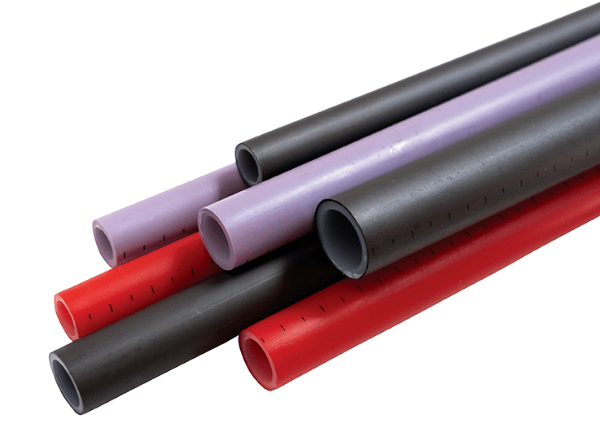Cross-Linked Polyethylene Market Impacting Factors Shaping the Future of Plumbing and Construction Industries

Cross-linked polyethylene, commonly known as PEX, has grown in importance due to its versatile applications in various industries, including construction, plumbing, automotive, and healthcare. The global PEX market has expanded rapidly, driven by factors such as technological advancements, growing demand for energy-efficient products, and increasing urbanization. This article explores the various factors influencing the cross-linked polyethylene market, highlighting both demand-side and supply-side elements that shape its growth trajectory.
1. Technological Advancements and Innovations
The continuous advancement of technologies in polymer science has significantly improved the properties of PEX materials. Cross-linking methods, such as the peroxide method, silane method, and irradiation method, have evolved over time, providing more efficient and durable solutions. These innovations have resulted in superior PEX products, which offer enhanced flexibility, resistance to high temperatures, and better chemical resistance compared to traditional materials. As a result, the market for PEX is expanding across various sectors, including plumbing systems and radiant heating applications.
2. Demand from the Construction and Plumbing Industries
The construction and plumbing industries are the largest consumers of cross-linked polyethylene. PEX pipes and tubing are increasingly favored over traditional copper and PVC pipes due to their cost-effectiveness, ease of installation, and long-lasting durability. These materials offer greater resistance to freezing and corrosion, making them ideal for use in cold climates. The booming real estate and infrastructure development sectors, especially in emerging economies, are driving the demand for PEX in residential, commercial, and industrial applications.
3. Rising Consumer Preference for Energy-Efficient Solutions
There is a growing consumer demand for energy-efficient products in various applications. Cross-linked polyethylene plays a significant role in this trend due to its insulating properties. In particular, PEX is used in underfloor heating systems, which provide efficient heat distribution. Moreover, PEX pipes have a high thermal resistance, reducing energy loss and lowering heating and cooling costs. This shift towards energy-efficient solutions is fueling the growth of the PEX market, as it aligns with sustainability goals across industries.
4. Increasing Urbanization and Infrastructure Development
Urbanization and rapid infrastructure development are driving the demand for cross-linked polyethylene. As cities expand, the need for reliable and durable plumbing systems becomes even more critical. PEX offers a flexible, easy-to-install alternative that reduces the overall construction time. It is also more cost-effective, providing long-term savings, especially in large-scale construction projects. As more urban centers are built in developing nations, PEX is positioned to meet the rising demand for modern infrastructure and plumbing solutions.
5. Environmental Impact and Sustainability
Environmental considerations are increasingly influencing the materials used in construction and plumbing. PEX is considered a more eco-friendly option compared to traditional materials such as copper, which has a higher environmental impact in terms of mining and processing. PEX is also recyclable, further enhancing its appeal to environmentally-conscious consumers and manufacturers. As the world focuses more on sustainability, PEX is seen as a material that reduces carbon footprints, offering a more sustainable solution for modern construction and infrastructure needs.
6. Market Challenges and Regulatory Concerns
While the growth of the PEX market is robust, it faces certain challenges. The potential health risks associated with the materials used in PEX production, such as leaching of chemicals into water systems, have led to stringent regulations in some regions. Moreover, the cost of raw materials and the complexity of production processes can add to the overall cost of PEX products. Addressing these concerns through regulatory compliance and ongoing research into safer production methods will be essential for maintaining market growth and consumer trust.
7. Regional Growth and Market Dynamics
The global market for cross-linked polyethylene is expected to witness significant growth in regions such as North America, Europe, and Asia Pacific. North America remains a key player due to its advanced infrastructure and high demand for energy-efficient solutions. Meanwhile, Asia Pacific, driven by rapid urbanization and industrialization in countries like China and India, presents a massive opportunity for growth. Local manufacturers and distributors are expanding their reach, providing cost-effective PEX solutions tailored to regional demands.
Conclusion
The cross-linked polyethylene market is shaped by several dynamic factors ranging from technological innovations to evolving consumer preferences. The growth of urban infrastructure, demand for energy-efficient solutions, and the need for durable, cost-effective materials are driving the market. As the industry navigates challenges related to regulations and environmental concerns, the future of PEX remains promising with continued advancements and broader adoption across various sectors.
- Art
- Causes
- Crafts
- Dance
- Drinks
- Film
- Fitness
- Food
- Games
- Gardening
- Health
- Home
- Literature
- Music
- Networking
- Other
- Party
- Religion
- Shopping
- Sports
- Theater
- Wellness


